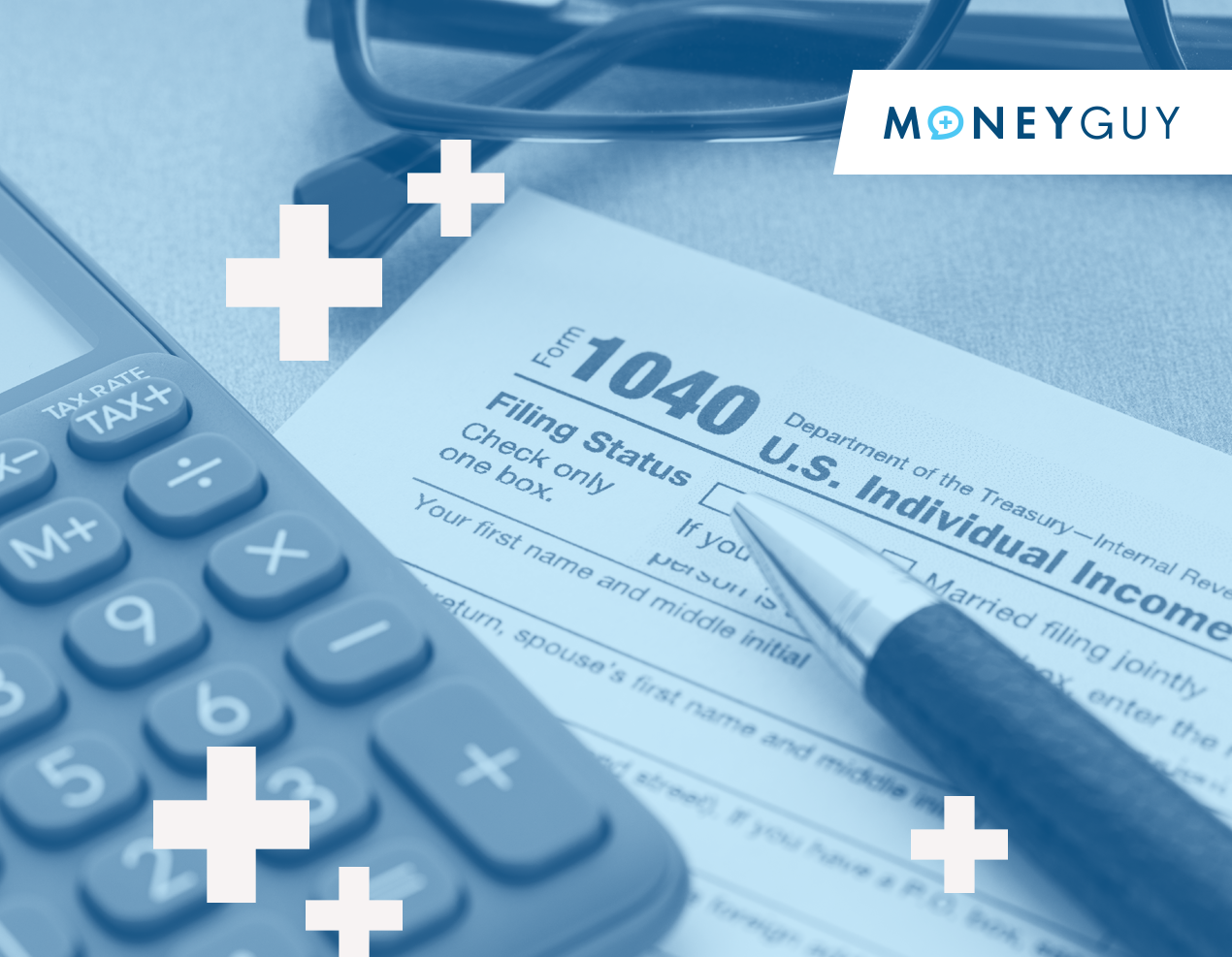
Change your life by
managing your money better.
Subscribe to our free weekly newsletter by entering your email address below.

Subscribe to our free weekly newsletter by entering your email address below.
Benjamin Franklin once said that only two things in life are certain: death and taxes.
One thing that isn’t certain, though, is the tax code—it changes all the time. The good news? The IRS has just released its updated numbers for 2025, and we’re excited to break them down for you.
Finding this information in one place can be tricky, but don’t worry—we’ve got you covered. In this video, we’ll cover:
The new marginal tax brackets
Updated contribution limits for retirement accounts
🔔 Note:
We won’t go deep into how concepts like marginal rates and deductions work in this video. If you need a refresher, be sure to watch our other video on that topic right after this one.
Everything mentioned here is available in our 2025 Tax Guide at MoneyGuy Resources, so be sure to check it out for a one-stop reference.
Your marginal tax rate is the rate at which your next dollar of income is taxed. Let’s look at the changes:
Example:
If you are a single filer earning $100,000 in taxable income, your marginal tax rate would be 22%, since that amount falls between $48,476 and $103,350.
For married couples filing jointly, the tax brackets are roughly double those of single filers (with a few exceptions).
Let’s go over the updated contribution limits for a range of retirement accounts. Some limits have remained unchanged since 2024, but we’ll list them all for clarity.
Traditional & Roth IRA:
$7,000 annually
Health Savings Account (HSA):
$4,300 for individuals
$8,550 for family plans
401(k), 403(b), 457 plans:
$23,500
SIMPLE IRA:
$16,500
🔹 These accounts also allow catch-up contributions if you’re over 50, except for SEP IRAs.
Some employer-sponsored plans now offer super catch-up contributions for individuals between the ages of 60 and 63.
Eligibility is based on your age as of December 31st of the tax year.
Not all employers are required to offer this, so check with your HR department or benefits provider.
Fully funded by employer contributions.
Contribution limit: 25% of compensation, up to $70,000 for 2025.
If your income exceeds $280,000, your contribution maxes out at $70,000.
SEP IRAs do not offer catch-up contributions.
Flexible Spending Account (FSA):
$3,300
ABLE Account:
$119,000
529 Plan:
Technically no strict limit, but:
You can contribute up to $119,000 annually without filing a gift tax return.
Contributing more may trigger gift tax reporting.
We know that was a lot of information! Again, you can find all of these details and more in our comprehensive 2025 Tax Guide at MoneyGuy.com.
And before you go—make sure to subscribe so we can help you on your financial journey.
Subscribe on these platforms or wherever you listen to podcasts! Turn on notifications to keep up with our new content, including:
Benjamin Franklin once said that only two things in life are certain: death and taxes. One thing that’s not certain, though, is the tax code. In fact, it changes all the time, and I am so excited about the fact that the IRS has just released all of their updated numbers for 2025. Finding all of this information in one place, though, can be a little tricky.
In this video, we’re going to load you up. We’re going to cover the new marginal tax brackets and contribution limits for retirement accounts. Don’t worry—we’ll get into what all that means as we go through it.
Two quick notes before we start. First, we’re not going to go too much in depth on how some of these concepts, like marginal rates and deductions, actually work. If you do need that info, make sure to check out this video right after this one. But do not click off of this video yet. Everything we’re going to cover in this video is in our 2025 tax guide at Money Guide Resources, so if you’re wanting all of this information in one place, be sure to check it out.
All right, let’s dive in.
The first change is one that affects anyone earning an income in the United States—that is, a change to our marginal tax rates. Your marginal tax rate is just a fancy term for the amount at which your next dollar is taxed.
All right, are you ready? Here are the changes for single individuals. Don’t worry, you don’t have to have all of those memorized. What you really want to know is: where is your income? For example, if your taxable income was $100,000 a year, your marginal tax rate as a single individual would be 22% because you fall in between the $48,476 and the $103,350.
For those married filing jointly, all of those income ranges are just double what they are for single folks—well, almost. For those who are married filing jointly, these are your new marginal tax rates.
The next big change is to retirement accounts—specifically to contribution limits of certain types of retirement accounts. Some of these numbers have remained the same from 2024, but we’re going to go over all of the accounts and their limits regardless of whether they changed or not. The accounts we’re going to cover are traditional and Roth IRAs, HSAs, employer-sponsored retirement plans—that’s like your 401(k), 403(b), 457, SIMPLE IRAs, and SEP IRAs.
One important note: in this video, we’re only going to focus on what’s called the standard contribution limit. With the exception of SEP IRAs, all of these accounts have what are called catch-up contributions for those that are over 50 years of age. And again, all of this is inside of our tax guide.
The traditional and Roth IRA contribution limit for 2025 is $7,000 annually. For HSAs, it’s $4,300 if you’re single and $8,550 if you’re covered under a family plan. For 401(k)s and other employer-sponsored retirement plans, the contribution limit is $23,500. The SIMPLE IRA contribution limit is $16,500.
Now, if that wasn’t complicated enough, employer-sponsored retirement plans and SIMPLE IRAs also have introduced something called super catch-up contributions. These are additional catch-up contributions that can be made for anyone between the ages of 60 and 63. The IRS looks at your age at the end of the tax year, so if you’re between 60 and 63 on December 31st, you may be able to take advantage of these. But these aren’t required to be offered by your employer, so check to make sure that your employer has opted to offer these super catch-ups.
The last account without any type of catch-up contribution available is the SEP IRA. The reason it’s a little different is because the SEP is fully funded by employer contributions. This account has a contribution limit of 25% of your compensation but not to exceed $70,000 in 2025. That means if you make more than $280,000 a year, your contribution limit would be $70,000.
Lastly, there are a few other types of accounts that have updated contribution limits. Those are Flexible Spending Accounts, or FSAs, the ABLE account, and 529s. The Flexible Spending Account has a contribution limit of $3,300, and the ABLE account’s limit is $119,000. The 529 also has a contribution limit of $119,000—sort of.
You see, 529s are a little bit different. The contribution limit isn’t quite a limit, but rather it’s the amount that you can contribute annually without having to file a gift tax return. So while you can contribute more, you may have to file a gift tax return if you do so.
I know we just covered a lot, but again, all of this information and more can be found in our 2025 tax guide at moneyguide.com/resources. Be sure to check it out. And before you go, make sure you subscribe if you haven’t already.


Tax Guide 2025
Updated for 2025! Ever wonder what the highly trained professionals use to tax plan? Wonder no more! We’ve assembled the…
View Resource
Tax Guide 2024
Updated for 2024! Ever wonder what the highly trained professionals use to tax plan? Wonder no more! We’ve assembled the…
View Resource
Financial Order of Operations®: Maximize Your Army of Dollar Bills!
Here are the 9 steps you’ve been waiting for Building wealth is simple when you know what to do and…
View Resource


How about more sense and more money?
Check for blindspots and shift into the financial fast-lane. Join a community of like minded Financial Mutants as we accelerate our wealth building process and have fun while doing it.




It's like finding some change in the couch cushions.
Watch or listen every week to learn and apply financial strategies to grow your wealth and live your best life.
Subscribe to our free weekly newsletter by entering your email address below.